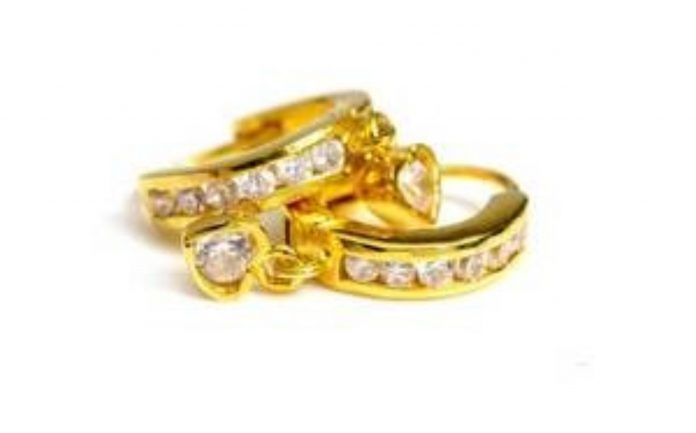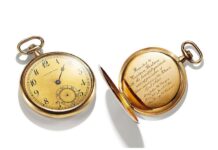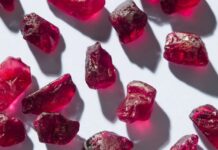Indians have a tradition of buying gold jewellery especially around Diwali. Although we spend hours at the local jeweller selecting what we want, we usually do not question the price quoted. This is wrong. You should not blindly trust the price quoted by the jeweller as there are many factors that affect the final amount that you will be paying such as pricing, making charges etc.
Currently, there is not standard invoicing pattern in the country and prices vary from jeweller to jeweller. Sandeep Kulhalli, senior vice president – retail and marketing, jewellery division, Titan Company explains, “There is no standard invoicing pattern in the country and the billing system varies from one jeweller to the next. Every city has its own jewellery association and the gold rate is declared by these associations every morning due to which the gold rate varies in each town.
Atul Sinha, senior vice president, marketing, Caratlane decodes how prices are calculated by jewellery shops:
Final price of the jewellery = Price of (22 KT or 18 KT) gold X (Weight in grams) + Making charges + GST at 3% on (Price of jewellery + making charges)
The below example can help you understand this better.
Suppose the price of gold listed by the jeweller is Rs. 27,350 for 10 grams of 22KT gold. Now, if you wish to purchase a gold chain of 9.6 grams, then price will be calculated as:
Price of 1 gram of gold = Rs. 27,350 divided by 10 = Rs. 2,735
Price of 9.60 grams’ gold chain = Rs 2,735 times 9.60 grams = Rs 26,256
Add making charges, suppose 10%, which comes to Rs 2,625.60 (10% of Rs 26,256)
Add GST at 3%: Rs 866.44 (3% of Rs 28881.60)
The final billing amount will be Rs 29,748.04 (Rs 26,256 + Rs 2,625.60 + Rs 866.44)
Here are a few things you should be aware of while buying gold to avoid being tricked.
Studded jewellery
At times, we buy jewellery that has stones affixed on it. Some unscrupulous jewellers weigh the entire piece and charge for it at the price of gold. In case you wish to exchange/sell it back, he would normally deduct the stone weight and impurity from the total value, says Sinha.
“The billing procedure differs for a studded product. When a customer purchases a studded jewellery piece, the stone value is also added into the bill,” Kulhalli explains.
Thus, while buying one should know that the value of gold in the piece has to be calculated based on the entire weight of the jewellery minus weight of diamonds and gemstones. The cost of diamonds and gemstones should be added separately.
Purity of gold
Gold jewellery is available in different Karats (KT). Karat is the measure of purity of gold. Sinha adds, “One should not confuse this with the word carat. Carat is a measure of the weight of diamond”.
24KT gold is the purest form of gold but it is too soft to be used for making jewellery. Most popular forms of gold available in jewellery is of 22KT which contains 91.6% gold. Alloys such as zinc, copper, cadmium or silver are added to the gold to make it stronger and more durable.
Sinha adds that the constitution and ratio of the alloys used determines the colour of the gold. For instance, palladium is added as an alloy in the case of white gold and an increased concentration of copper is used in the case of rose gold.
Pricing of gold
Price of gold jewellery depends on two things – a) parts of gold in the jewellery, i.e. 22KT or 18KT, and b) type of metal used to mix with the gold.
“Gold is traded (on the exchanges) everyday and demand, supply and various other factors determine the price each day. The national pure gold rates are usually published in most newspapers or websites. But the gold rate for different jewellers varies as it depends on from whom they are buying gold and at what price. However, the difference in price is usually small,” says Sinha.
The main factor that contributes to the varying prices of jewellery is the difference in the buying rate and selling rate of gold, explains Kulhalli. “Most jewellers tend to have different rates while buying and selling,” he says.
Sinha adds, “The price of jewellery without making charges and GST would include the price of gold (depending on its purity) and alloys added to it. However, the cost of adding these alloys to pure gold is minimal and is usually not more than 3% of the pure gold value used in the jewellery.
He explains this with an example:
If the price of gold is Rs 3,300 per gram then the cost of 22KT gold would be Rs 3300 X 22/24 = Rs. 3025 per gram. However, alloys are also added to make jewellery stronger. The cost of these can range between Rs 30 and Rs 60 per gram. Hence, the retail price for 22 kt gold will be Rs 3025 + Rs 60 = Rs 3085 per gram.
Making charges
Making charges vary depending on the type of gold jewellery you are buying. This is because every ornament requires different style of cutting and finishing. It also depends on how much fine detailing is required in the design, i.e., if it is a man-made or machine-made. Machine-made jewellery usually costs less than man-made ones.
Kulhalli says, “Making charges are termed differently by each jeweller. Some jewellers call it ‘making charges’ and others may term it as ‘wastage’.”
Making charges can be quoted in two ways – either as a percentage of the gold value or as a flat making charge per gram of gold.
Customers can bargain and negotiate for a reduction in the making charge at most jewellers. This is possible because the percentage of these charges is not standardised across jewellers, says Kulhalli.
He adds, “Even at the same jewellery store, the discount that the salesperson offers will vary from the discount offered by the store manager. This practice does not offer any transparency in billing to the customer.”
Sinha says, “A customer may never get to know if they have bargained enough. The same product may be sold at a lower price to another customer who may have bargained harder.”
As a money saving tip Sinha says, there can be small differences in making charges depending on which gold market you are buying from. In a scenario where gold prices are increasing, a flat making charge will be beneficial to the customer whereas when gold prices are falling, percentage based making charges can be more beneficial.
BIS Standard hallmark for purity
Hallmarking is done to certify the purity of gold jewellery. Hallmarking is done by the Bureau of Indian Standards (BIS) and is a certification of the purity of gold used.
BIS embosses the logo of hallmark along with fineness number (corresponding to given karat), hallmarking centre mark, jeweller’s identification mark, and the year of marking denoted by a code letter decided by BIS.
The below table can help you know the fineness number corresponding to different purity levels.
A customer must keep four factors in mind while buying gold jewellery – measuring the purity of gold, understanding exchange policies that the jeweller offers, knowing the product warranty, and ensuring a transparent break-up of the bill, says Kulhalli.
Notably, MMTC a public sector undertaking which regularly holds gold jewellery sale and exhibitions, did not reply to our e-mails requesting their method of calculating the price of gold jewellery despite repeated reminders and telephonic follow-ups of the same.
News Source : economictimes.indiatimes.com
Disclaimer: This information has been collected through secondary research and TJM Media Pvt Ltd. is not responsible for any errors in the same.


























